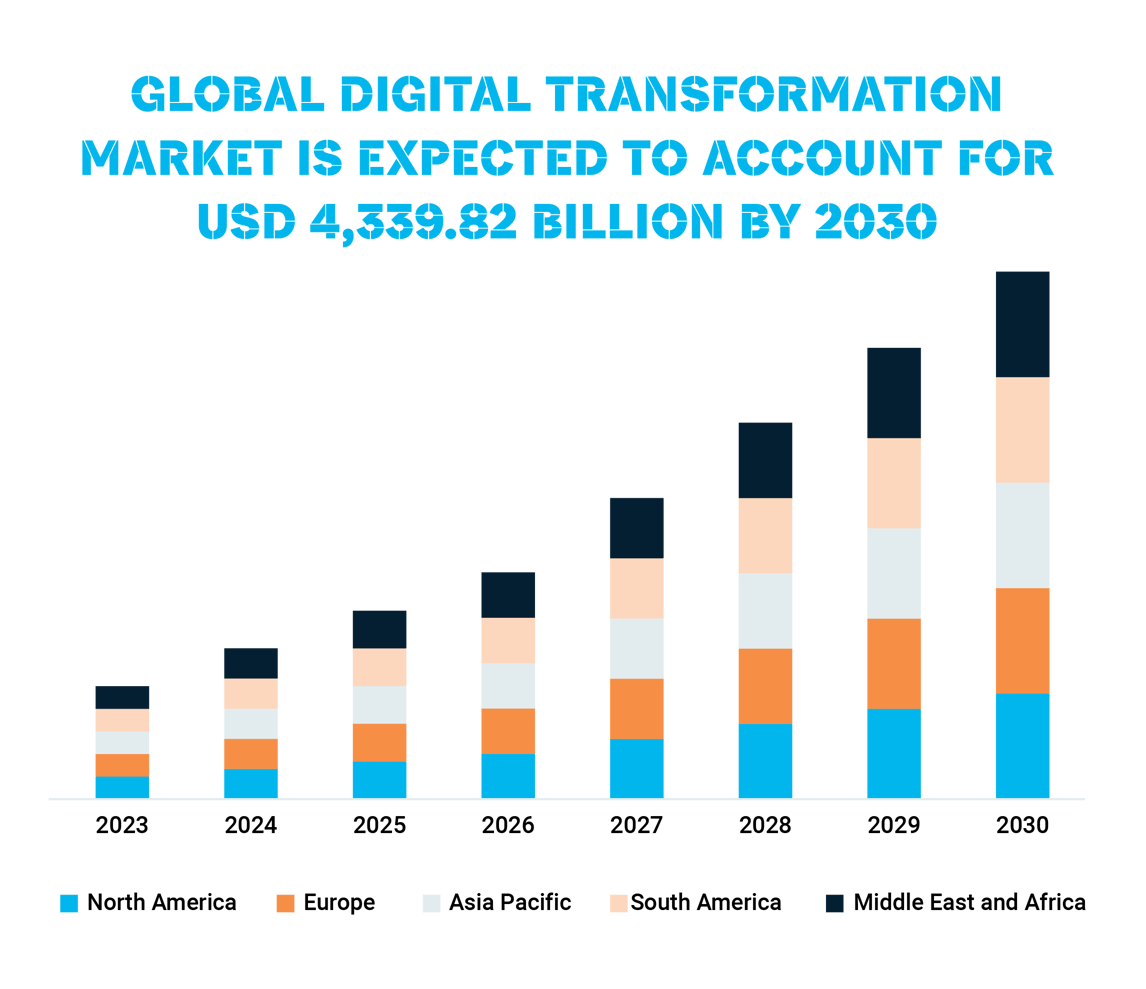-
About Us
Probe CX is a tech-powered, global customer experience organization that amplifies human capabilities with technological excellence.
-
Awards and Accreditations
As an industry-leading CX and digital transformation provider, Probe CX has a resume to match any of our competition.
-
Compliance
Industry-recognized certifications to protect what matters most to our clients and their customers.
-
Locations
Over 19,000 team members delivering exceptional customer experiences across four countries.
-
Vision and Culture
We help our clients become modern digital organizations by combining the latest technology with people, process and data.
-
Executive Team
Meet the team with unmatched experience committed to helping organizations create environments for digitally-enabled CX to thrive.
A leading energy and gas industry retailer required support with credit collection activities and help to optimize their KMS.
- Blog
- The definitive guide to digital transformation statistics
The definitive guide to digital transformation statistics

That strategy? Digital transformation.
Make no mistake – businesses that fail to embrace digital transformation are putting themselves at risk of failing to keep pace with their competitors. One need only look at how the world’s leading companies are using new technologies to reinvent how they do business to appreciate its power.
Take global sportswear leader Nike, which has changed its entire approach to branding, sales and technology1. A concerted effort to become a direct-to-consumer brand has seen a reduction in retail partnerships in favor of multiple online sales channels, while programs such as Nike Training Club2 are allowing it to collect and analyze rich consumer data.
If any company could be forgiven for resting on its laurels it would be Nike but by refusing to simply do what it has always done and instead launching its own digital efforts to meet specific needs3, it continues to dominate the sports brand world more than 50 years after it emerged out of the US state of Oregon.
The good news is that an organization does not need the billion-dollar resources of Nike to develop and deploy a successful digital transformation strategy. One of the advantages of a global boom in technological development is there are endless solutions, concepts and theories that can be embraced or adapted by businesses of all shapes and sizes.
And for those executives and business leaders still debating the need to devote resources to the field, there are countless facts and figures that reinforce why it is crucial for short and long term success and the good news is we have compiled dozens of them into this definitive list of digital transformation statistics.
Digital transformation investment
Befitting a strategy that is revolutionizing how businesses do business, there has been massive growth in investment in digital transformation during the past few years and that does not look like changing any time soon. Global spending in the field is tipped to double in the next four years and create over $100 trillion in benefits and value.
- Global spending on digital transformation reached $1.8 trillion in 2022 and is expected to increase to $2.8 trillion by 20254
- The worldwide digital transformation market was valued at $998.99 billion in 2020 and forecasts an increase to $2,744.68 billion by 2026, a CAGR of 17.42%5
- The World Economic Forum believes the societal and industrial value of digital transformation could reach $100 trillion by 20256.

Source: Digital Transformation Market Analysis, Trends & Growth by 2030 (databridgemarketresearch.com)
Data capture
Data is fast becoming the foundation of digital transformation. While investment in practical solutions such as portals and apps are important, there is an increasing amount of work being done to underpin what is done from a technology and change perspective including creating a solid data layer that connects businesses and customers7. It is all about gaining insights into how customers are buying, what they are buying, their customer experience and the role technologies can play in helping organizations connect with them8.
- 63% of retailers expect to spend more on data analytics and business intelligence9
- More than a third of CIOs anticipate difficulty finding appropriate skill sets in data science10
- Workers with data science skills are preferred by 69% of employers11
- Forrester has found 65% of companies encourage collaboration between the business and analytics and data science teams12
- The worldwide data analytics outsourcing market is tipped to reach $20.68 billion by 202613
- 72% of data and analytics leaders are either leading or heavily involved in their organization’s digital transformation14.
Artificial intelligence
No modern digital transformation strategy is complete without factoring in how to create organizational learning and pathways towards an AI-enabled enterprise. Artificial intelligence is one of the most exciting technological innovations but it is also critical not to lose sight of the customer in that mission. It is easy to do AI or automation for its own sake but as Microsoft CEO Satya Nadella recently said:
“We’re moving from the autopilot era of AI to the copilot era.”15 Artificial intelligence and automation are clearly powerful tools but there is a need to combine such tools with human ingenuity to realize their maximum potential.
- The AI market is expected to reach $407 billion by 202716
- 35% of companies are using AI and 42% of companies are exploring AI options for the future17
- Customer satisfaction is expected to grow by 25% for organizations that use AI18
- The number of businesses that use AI soared by 300% in the past five years19
- Netflix saves $1 billion each year by using automated personalized recommendations20
- Two-thirds of consumers are open to AI enhancing customer engagement21.
Importance of efficiency
When rolling out a digital transformation strategy, it is essential to ensure that efficiency remains the end game. There are many benefits to be gained by embracing digital innovation but one of the best predictors of Net Promoter Score (NPS) success is efficiency. Take an example of a contact center agent in a telecommunications call center - in a case where the agent may not be the most personable of people but is able to reconnect an internet fault immediately - customers will be content and generally report a high NPS score. It is all about efficiency and when it comes to digital transformation, that means connecting systems to make it as easy as possible for customers to do business.
- A Fujitsu study found improved efficiency is the second highest driver for companies embracing digital transformation (69%), only trailing ‘strengthened competitiveness (70%)22
- The top benefits of adopting a digital model are improving operational efficiency (40%), being faster to market (36%) and helping meet customer expectations (35%)23
- 69% of IT decision-makers primarily view digital transformation as a way to improve process efficiency24
- IBM research found 95% of Chief Supply Chain Officers believe digital transformation in supply chains leads to higher efficiency in tackling challenges25
- Gartner predicts organizations with customer service channels that properly embed AI will boost operational efficiency by 25%26.
Digital transformation failure
Just as there are significant benefits to be realized from a successful digital transformation program, a flawed strategy can be disastrous. Amid the myriad of statistics about the power of technological innovation, there is overwhelming evidence that the vast majority of digital transformations fail as naïve or ill-equipped businesses struggle to build capabilities. Quality research, gaining executive buy-in and working with trusted tech partners are just a few ways to avoid adding to statistics such as the following.
- Forbes says the digital transformation failure rate is as high as 84%27
- McKinsey has found 70% of digital transformations fail due to employee resistance28
- 75% of executives say their business functions compete instead of collaborating on digital projects29
- 28% of companies consider digital transformation as a cost center, while resistance to change (26%) and compliance or legal concerns (26%) are also barriers to success30
- Organizations with 100 or fewer employees are 2.7 times more likely to succeed in digital transformation than companies with 50,000 or more employees31
- A study of IT professionals found a lack of IT skills or transformation expertise is the biggest hurdle to digital transformation success (54%), followed by dependency on legacy systems (53%)32.
Summary
While some business trends come and go, the digital transformation revolution is only gathering momentum. In an ideal world, organizations will have already commenced their journey and be heavily invested in developing, deploying and maintaining tools and solutions that are delivering wins for their employees, customers and bottom lines. For those that find themselves behind the eight-ball, the good news is it is never too late to create a better tomorrow and the first step should be teaming with a CX partner that not only knows the power of digital transformation but has the people to deliver it.
Generative AI has the potential to change the customer experience game but businesses need to do their research before rushing to implementation. Check out the first instalment of our Generative AI special report here.
Reference:
[1] Nike's Digital Transformation Efforts Continue to Win Big (intelligentautomation.network)
[2] Nike Training Club App. Home Workouts & More. Nike AU
[3] digital_transformation_at_nike_20-12_pdf.pdf (capgemini.com)
[4] Global digital transformation spending 2026 | Statista
[5] Digital Transformation Market - Size, Trends & Growth (mordorintelligence.com)
[6] What is Digital Transformation & Its Importance for Businesses (imaginovation.net)
[7] https://securityintelligence.com/articles/digital-transformation-balancing-speed-security-innovation-cybersecurity/
[8] What is Digital Transformation & Its Importance for Businesses (imaginovation.net)
[9] Top 7 trends in retail digital transformation and innovation for 2021 | Retail Dive
[10] https://www.idg.com/tools-for-marketers/2020-state-of-the-cio/
[11] Using human capital data to optimize employee performance and retention, PwC People Analytics: PwC
[12] 34 digital transformation statistics (2020-2023 + original sources) (digital-adoption.com)
[13] 24+ Mesmerizing Workplace Collaboration Statistics [2023] (goremotely.net)
[14] Gartner Survey Finds 72% of Data & Analytics Leaders Are Leading or Heavily Involved in Digital Transformation Initiatives
[15] Microsoft CEO says we're moving to the 'co-pilot era' of AI - YouTube
[16] 24 Top AI Statistics & Trends In 2023 – Forbes Advisor
[17] 101 Artificial Intelligence Statistics [Updated for 2023] (techjury.net)
[18] https://tig.comptia.org/t/y4hjzw0/artificial-intelligence-growth-boosting-factor-in-the-new-normal
[19] 10+ Essential AI Statistics You Need to Know for 2023 | Tidio
[20] Netflix Recommendation Engine Worth $1 Billion Per Year (businessinsider.com)
[21] 149 AI Statistics: The Present and Future of AI [2023 Stats] (authorityhacker.com)
[22] Digital Transformation Trends in Retail 2020-2021 & Covid-19 Impact : Fujitsu Global
[23] 37 Incredible Digital Transformation Statistics [2023]: Need-To-Know Facts On The Future Of Business - Zippia
[24] bakermckenzie.com/-/media/files/insight/publications/2021/12/2021-digital-transformation--cloud-survey--a-wave-of-change.pdf
[25] ibm.com/downloads/cas/VDNJQ20P
[26] 130+ Best Digital Transformation Statistics for 2023 and Beyond (templeton-recruitment.com)
[27] Why 84% Of Companies Fail At Digital Transformation (forbes.com)
[28] The ‘how’ of transformation | McKinsey
[29] https://financesonline.com/online-collaboration-statistics-analysis-of-trends-data-and-market-share/
[30] insights.prophet.com/the-state-of-digital-transformation-2018-2019
[31] The keys to a successful digital transformation | McKinsey
[32] 2023 Data Protection Trends Report - Veeam
Related Articles
Digital Transformation
A survival guide for digital transformation
Discover the key questions to answer before tackling the daunting task of digital transformation.
Customer Experience CX
Customer experience (CX) tech: a banking and finance gamechanger
Discover the importance of CX and what digital tools are changing the status quo in the banking and finance industry.
Strategy
Tips for humanizing CX while prioritizing automation
Discover how automation can change customer experience for the better.
© Copyright 2025 Probe CX | ProbeCX is a proudly owned subsidiary of Probe Group
Privacy Policy | Responsible AI Policy | Financial Hardship Policy | Whistleblower Policy | Complaints Procedure | Supplier Code of Conduct




